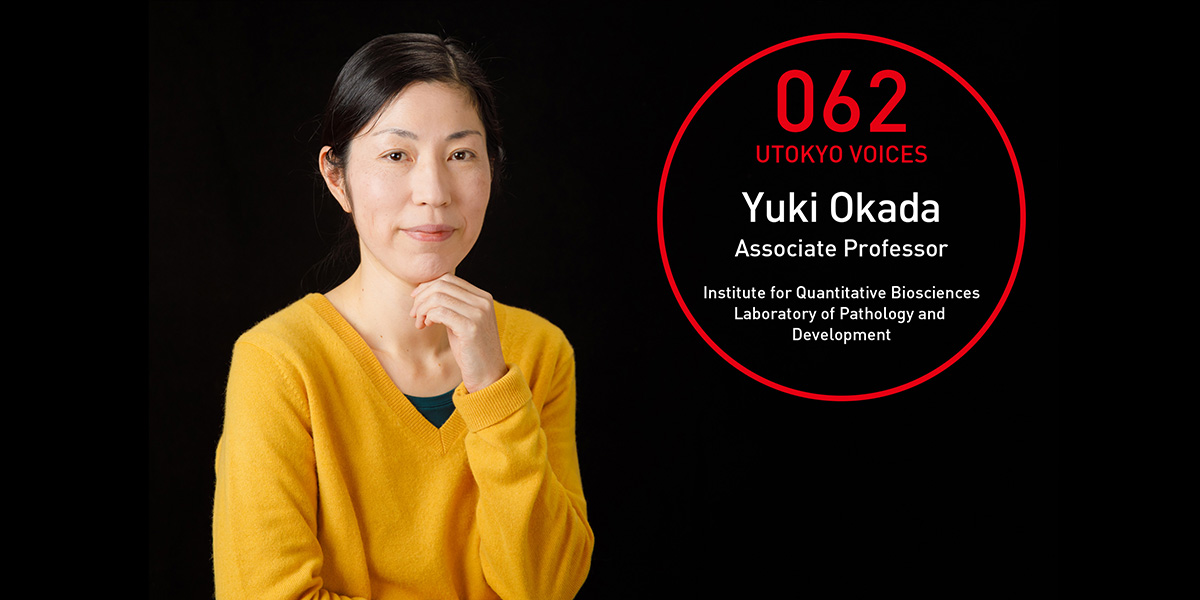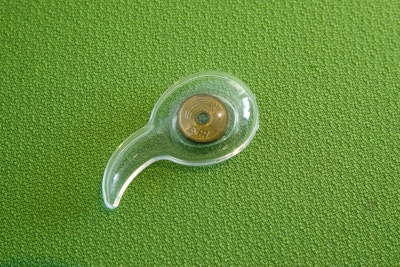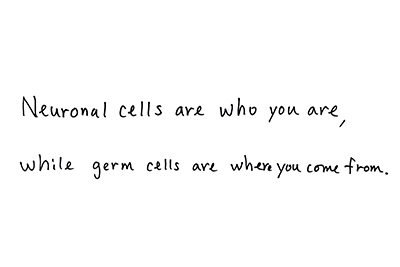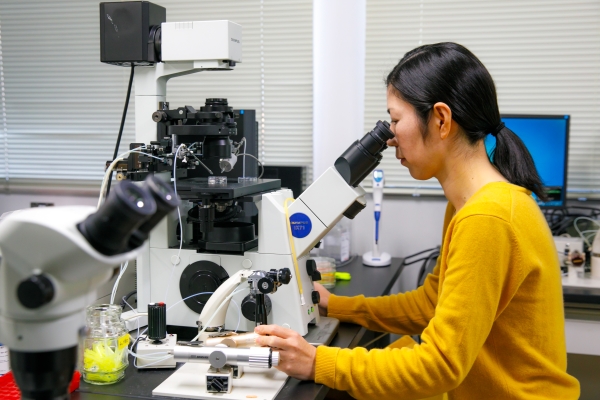Turns out DNA isn’t the only genetic material: Elucidating the mechanism of inheritance through sperm|UTOKYO VOICES 062


Turns out DNA isn’t the only genetic material: Elucidating the mechanism of inheritance through sperm
We now know living organisms’ gametes aren’t the exclusive vehicles of DNA.
“It was said that DNA is the only thing that offspring inherit from their parents via gametes, but we now know that RNA and histone proteins in sperm nuclei are also indirectly inherited,” says Professor Yuki Okada, who researches reproductive cells. “For example, given that the child of an elderly father will have a higher risk of mental ailments, and that the child of a father who has been subject to nutritional stress will have lower nutritional load tolerance, we now see that it’s possible that substances other than DNA are genetically transmitted.”
Okada, who now spends her days researching, grew up in a small town in the southernmost region of the Kii Peninsula, where there were no nearby universities, let alone cram schools. “I don’t have many memories studying, and I didn’t even think of becoming a researcher,” says Okada, laughing. When she was to receive counseling about her career path in her third year of high school, Okada, who knew she would be reprimanded if she didn’t think of something, thought of her dear pet dog who died the day before and blurted out: “I want to be a veterinarian.” This was the beginning of Okada’s path to becoming a researcher.
It was a path that Okada had decided on in the spur of the moment, but she remarkably passed the entrance exams to study science at Hokkaido University, later transferring to the School of Veterinary Medicine. In her fourth year, Okada went to an animal hospital where she also worked part time, and seeing hunting dogs and dogs donning nice clothing, she thought, “I don’t fit in this world where animals are exploited at the whims of humans.” Thus she gave up on becoming a clinical veterinarian and entered a pathology class which would have effective applications. Before she knew it, Okada, who was enjoying her graduation research that began in her fifth year, realized the job hunting season had passed her by, and transferred to the Graduate School of Medicine where she spent four years researching viruses.
The professors in the School of Medicine were of the thought that “those who want to become researchers must go overseas.” Okada saw a recruiting ad for a university in the U.S. and was fortunate enough to get the position following a phone interview. It was a postdoctoral position in a research lab at the University of North Carolina at Chapel Hill. The subject she was entrusted with, histone research, was completely unrelated to viruses, but Okada engaged frantically with the research and published her results. “It was a great research theme and I was even able to secure a patent, which was purchased by a pharmaceutical company and applied to a leukemia medicine. The lab rapidly expanded and I spent six happy years there.”
Okada later relocated to Kyoto University, where she engaged in research on reproductive cells. “The material of my research in the U.S. was cells that contained histone, but this time I wanted to conduct research on sperm without histone.” But just when the fruits of Okada’s research began to materialize, a different researcher presented their research on the same subject, the results of which were the same, greatly disheartening Okada and her team. However, shortly thereafter, papers refuting these results began to appear, and a state of confusion ensued over which findings on sperm histones were correct. Okada, who came to the University of Tokyo in 2012, says, “I became acquainted with researchers who had techniques that seemed to have potential to resolve this issue, and after conducting the tests again, we found that both findings were correct.”
Going forward, Okada plans to conduct research on the workings by which histones are removed from sperm, and elucidate the mechanism by which substances other than DNA are transmitted via sperm. She also plans to conduct research that will help with infertility treatment. “I am also interested in researching why the gene profile and epigenome profile of reproductive cells and nerve cells look alike. I have a feeling brain scientists will tell me they don’t look alike, though.”
“Up until now, I’ve kind of improvised along the way, so I think I’ll end up doing the same from here on out as well. [laughs] But no matter where I end up going, I’m the type of person who will think I’ve made the best choice, so regardless of the results, I’ll probably assume that this time as well.”


A transparent sperm-shaped case with a five-yen coin inside
“Originally this was the ‘case’ of a frog-themed light product. I bought it, wanting the case instead of the actual light. Initially I inserted colored rubber meant to resemble chromatin (a DNA-protein conjugate), but I recently inserted a five-yen coin for good luck.”


“Neuronal cells are who you are, while germ cells are where you come from.”
The saying of a researcher famous for reproductive cell research that has been passed down for generations: “Nerve cells are what give you form. On the other hand, reproductive cells are where you came from, and where you’re going.” This is used as a “set phrase to recruit students motivated to research nerves or cancer into reproductive cell research.”

Profile
Yuki Okada
Obtained Ph.D. from Faculty of Veterinary Medicine, Hokkaido University, in 2002, and in the same year worked as a researcher at research program CREST. Worked as a special researcher (P.D.) at the Japan Society for the Promotion of Science in 2003; an NHI grant postdoctoral fellow in 2004; an overseas special researcher at the Japan Society for the Promotion of Science in 2005; a postdoctoral fellow and research specialist at HHMI in 2007; a designated assistant professor at the biostudies career path unit, Kyoto University, in 2009; a special-appointed associate professor at the Institute of Molecular and Cellular Biosciences, the University of Tokyo, in 2012; an associate professor at the Institute of Molecular and Cellular Biosciences, the University of Tokyo, in 2016; and an associate professor at the Institute for Quantitative Biosciences, the University of Tokyo, from 2018. Received the FY2011 Young Scientist’s Prize, MEXT Minister’s Award.
Interview date: January 16, 2019
Interview/text: Tsutomu Sahara. Photos: Takuma Imamura.






